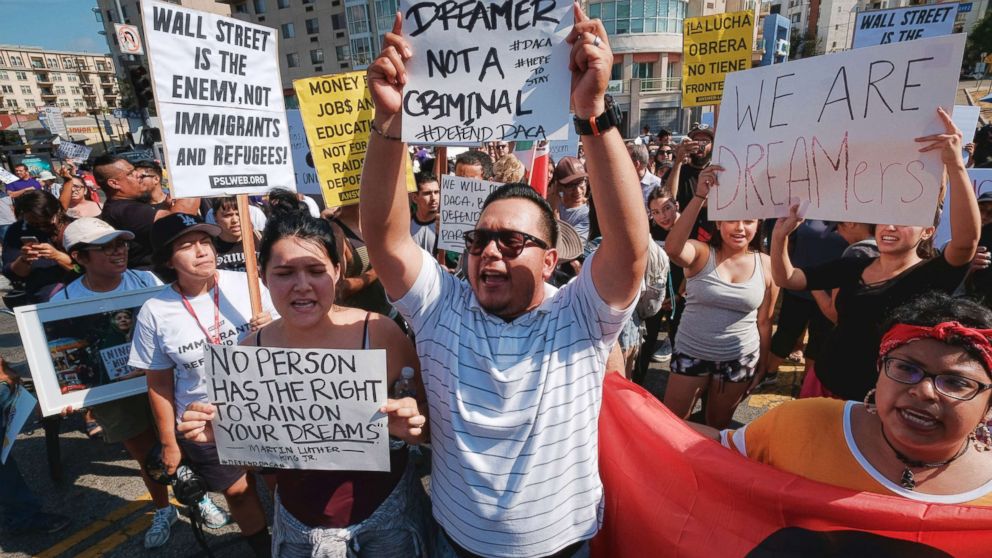What we know about the nearly 800,000 unauthorized immigrants protected by DACA
— -- Attorney General Jeff Sessions today announced a plan to rescind the Obama-era Deferred Action for Childhood Arrivals program, known as DACA, which defers deportation for unauthorized immigrants who were brought to the country illegally as children.
“To have a lawful system of immigration that serves the national interest, we cannot admit everyone who would like to come here. It's just that simple,” Sessions, who took no questions from reporters, said at the Department of Justice in announcing the administration’s decision today.
DACA gave unauthorized immigrants who came to the United States before age 16 a reprieve from deportation and permission to study or work here provided they meet the program's requirements, which include being enrolled in school and not having a serious criminal conviction.
Here's a look at who makes up the 799,077 immigrants protected under the program:
Where they live and where they came from
More than three-quarters of applicants who meet the program's criteria -- currently over 600,000 --- came to the U.S. from Mexico, but DACA also applies to over 10,000 residents from South Korea, over 5,000 from the Philippines, some 3,800 from India and over 1,800 from Poland.
How old they were when they came to the US
To qualify for DACA, applicants must have been under 31 years of age when the policy went into effect in 2012, must have lived in the United States continuously since June 15, 2007, and must have come to the country before turning 16.
More than three-quarters were 23 years old or younger when applying to the program and more than one-third were still under 18, according to the 2013 Brookings study.
How they participate in the US economy
The study, which looks at data from 2014, also found that 24 percent of DACA-eligible workers were also attending college, a slightly larger share than the 20 percent of the general population in the same age group both studying and working.
Close to one-third of DACA-eligible residents was enrolled in college or had completed some college, compared to 37 percent for the general population, the study found.




